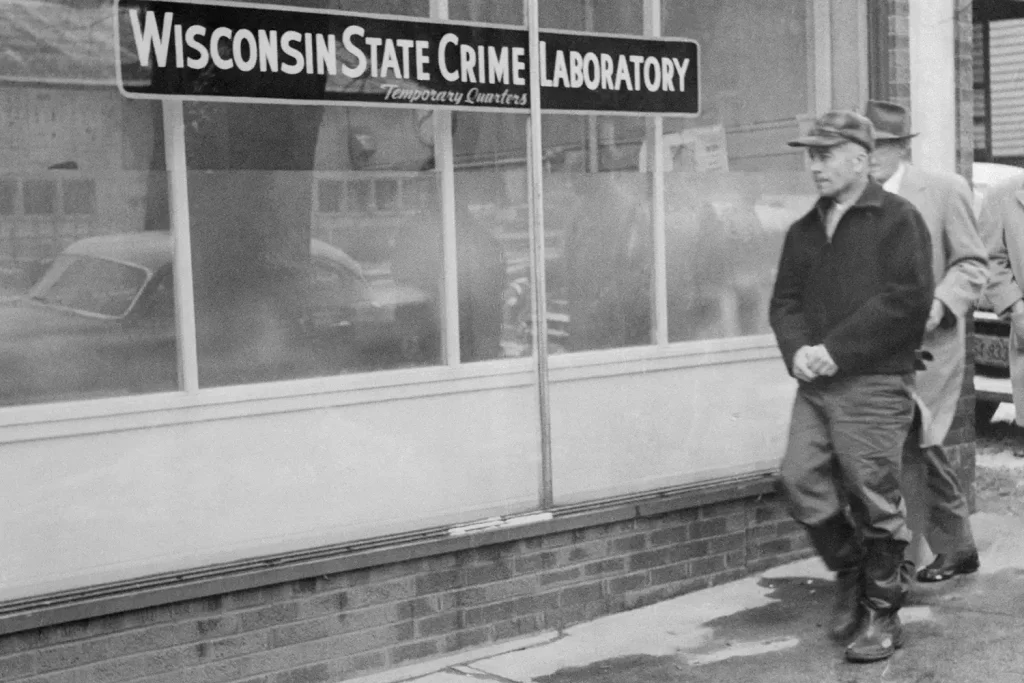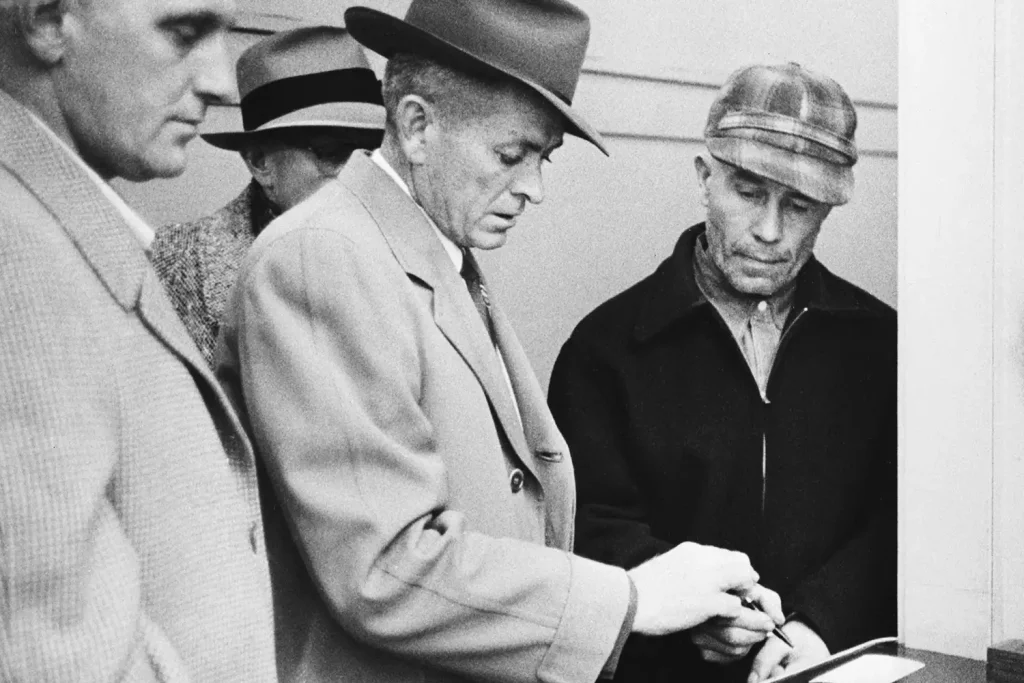Inside the Final Days of Ed Gein — How the Real-Life Monster Who Inspired “Psycho” and “The Texas Chainsaw Massacre” Spent His Last Years and Why His Grave Remains Unmarked
Decades after his crimes shocked small-town Wisconsin and inspired some of Hollywood’s most haunting films, Ed Gein’s story continues to grip the public imagination. Now, with Netflix revisiting his life in Monster season 3, the man who became a dark legend is once again at the center of attention — not for what he did, but for how he ended his life.

Ed Gein died on July 26, 1984, at the age of 77, inside Mendota Mental Health Institute in Madison, Wisconsin. He had been committed there for nearly three decades, declared insane after confessing to horrific acts that blurred the line between reality and nightmare. But in his final years, those who cared for him described a quiet, polite, and obedient man — a far cry from the gruesome reputation that defined him.

Gein had lived a deeply isolated life long before his arrest in 1957. Born in 1906 in La Crosse, Wisconsin, he grew up under the suffocating control of his mother, Augusta, whose strict religious beliefs and hatred for women shaped her son’s worldview. After her death, Ed lived alone on the family farm near Plainfield, where he began collecting and creating macabre objects from human remains stolen from local cemeteries. His crimes were discovered after the disappearance of a local hardware store owner, Bernice Worden, whose body was later found on his property.
Declared mentally incompetent to stand trial, Gein spent the rest of his life in state psychiatric hospitals, where he was treated for schizophrenia and severe psychosis. Staff members later described him as cooperative and even gentle. He spent his days performing simple tasks, reading, and drawing, seemingly disconnected from the monstrous image the world had of him. To many, this duality — the quiet patient versus the man whose crimes defined an era of horror — remains one of the most unsettling parts of his story.

Gein’s health began to deteriorate in the early 1980s. He developed cancer and suffered from respiratory and heart failure before passing away at Mendota. His death marked the end of one of America’s most infamous criminal lives, but his story did not rest even in death.

When Gein was buried beside his family in Plainfield Cemetery, his grave became an attraction for the morbidly curious. Tourists and collectors began visiting, some taking souvenirs, others carving his name into nearby trees. Eventually, vandals stole the headstone itself in 2000, though it was later recovered in Seattle. Afterward, officials decided not to replace it, leaving his grave unmarked to prevent further disturbances. Today, his resting place is known only to cemetery staff and a few historians — a quiet ending for a man whose name became synonymous with terror.

The irony of Ed Gein’s final years lies in their normalcy. After a life that horrified the nation, he died in anonymity, surrounded not by fear or fame but by institutional walls and caretakers who treated him as just another patient. Yet, even now, his legacy endures in culture, psychology, and cinema — from Psycho’s Norman Bates to The Texas Chainsaw Massacre’s Leatherface.

Netflix’s renewed focus on his life once again raises an old question: how does society confront evil once it’s stripped of its myth? Ed Gein’s story is not just about crime, but about the haunting complexity of human nature, mental illness, and the dark fascination that lingers long after the real-life horrors have ended.



